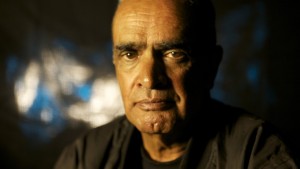Australia needs to face up to racist past – activist
Australia needs to formally address its long history of racism and poor treatment of indigenous people, according to aboriginal activist and academic Professor Gary Foley.
Speaking at forum on social cohesion in Melbourne this month, Professor Foley said Australia should adopt the South African model of a truth and reconciliation commission.

Aboriginal activist and academic, Professor Gary Foley, says Australia needs to face up to its racist past
“There’s not just a need to get to the truth of what happened, there is also a need to identify and bring to account the people and politicians who were responsible for it,” he said.
“Gillian Triggs has said that while we must celebrate our cultural diversity and social cohesion, racism remains a significant factor in Australia and it impacts on social cohesion,” said Prof Foley, who teaches history at Victoria University.
“People need to understand the long history of racism in Australia. This country was built on it,” he said.
“Federation came about because of a desire to lock up this land for white people.
“Germany and Japan were forced to confront their pasts and I believe they are better nations for it.
“South Africa instituted its Truth and Reconciliation Commission after the apartheid era to lay bare the facts of what happened. What has Australia done – nothing.
“If you look at the media, there is unbelievable racism in comments you see underneath online news articles on aboriginal people – be they footballer or others.
“I don’t have to tell non-white students in my classes that Australia is racist – they already know,” he said.
Prof Foley told the audience that in 1965 he was the only black student in his class of apprentices at his school in northern NSW.
“A quarter of the population of the Nambucca Valley where I grew up were black but I was the only blackfella in third form at Maxwell High School.
“The system deliberately excluded my people from educational opportunities.
“We were even segregated in the local movie theatres.
“This regime did not end until 1972 with Gough Whitlam. But now it’s returned with the outrageous human rights abuse that is the so-called intervention in the Northern Territory.”
Prof Foley said the White Australia Policy was also a measure of Australia’s history of racism.
“One former immigration minister infamously said ‘two wongs don’t make a white’,” he said.
But ultimately, Prof Foley said, he was optimistic about Australia’s future in terms of social cohesion and multiculturalism.
“There are a lot of good people out there with good hearts and that keeps me optimistic,” he said.
“And when I look at my daughter’s class, I see a completely different class from my class of 1965. There are many different races represented and for the kids in that class diversity is just normal – it’s not something they notice,” he said.
The Truth and Reconciliation Commission (TRC) was a court-like restorative justice body assembled in South Africa after the abolition of apartheid in the 1990s.
Witnesses who were identified as victims of gross human rights violations were invited to give statements about their experiences, and some were selected for public hearings.
Perpetrators of violence could also give testimony and request amnesty from both civil and criminal prosecution.
The TRC, the first of the 1003 held internationally to stage public hearings, was seen by described as a crucial component of the transition to full and free democracy in South Africa.
The TRC had a number of high-profile members, including Archbishop Desmond Tutu (chairman), Alex Boraine (deputy chairman), Sisi Khampepe, Wynand Malan, and Emma Mashinini.
Laurie Nowell
AMES Australia Senior Journalist












